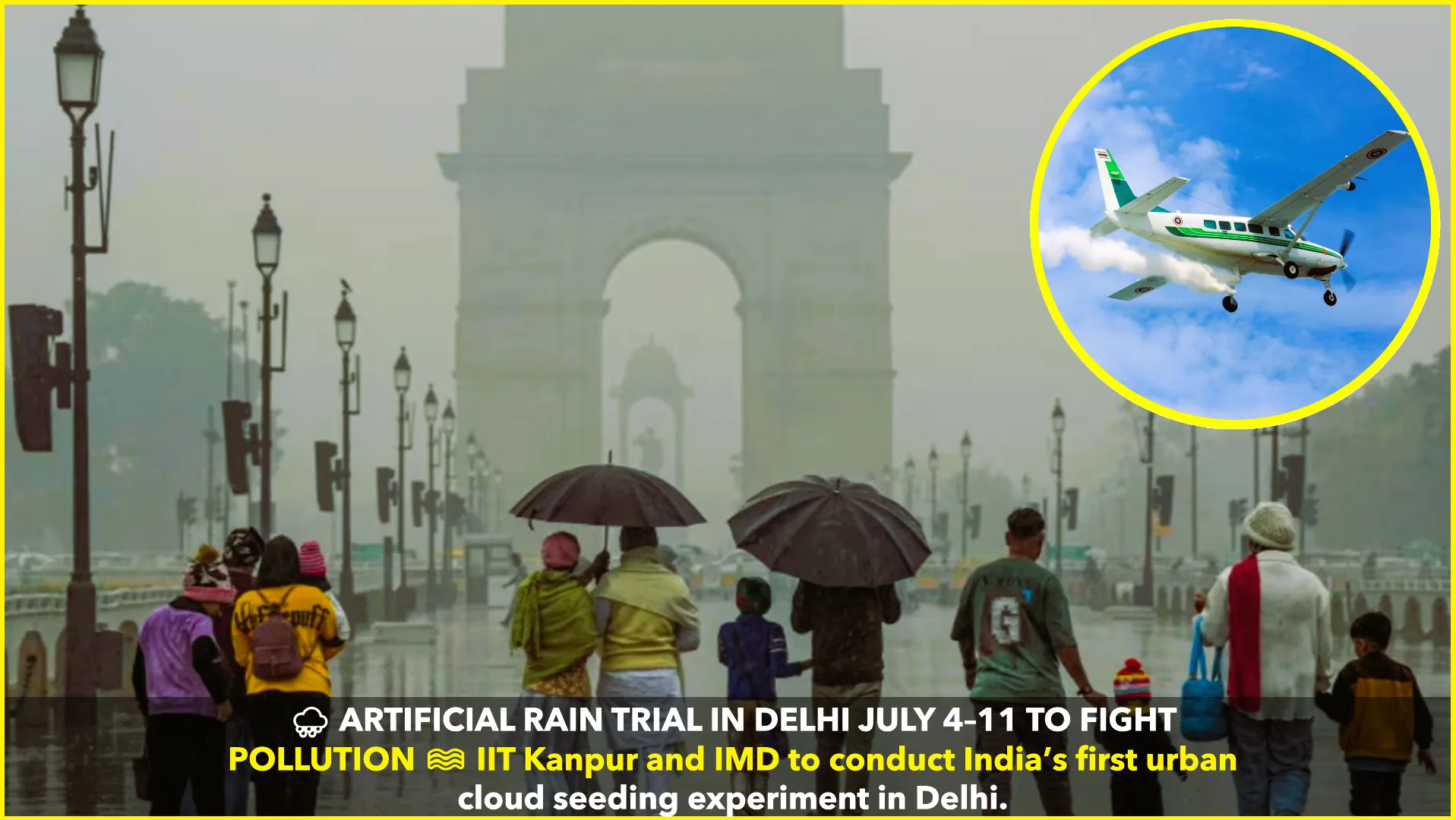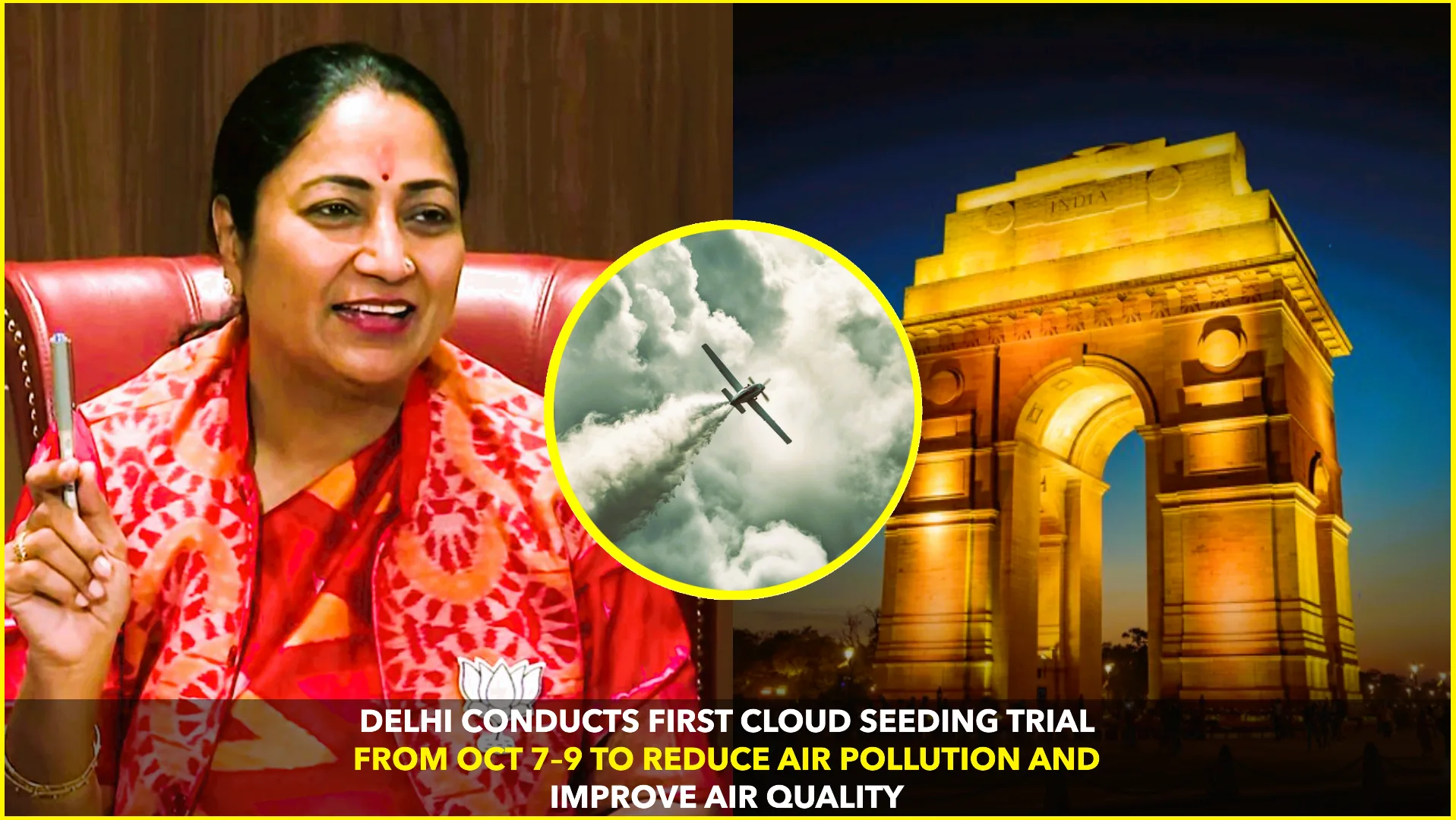In a groundbreaking move to combat the ever-worsening air quality, Delhi is set to conduct its first-ever artificial rain experiment through cloud seeding between July 4 and 11, 2025. This pilot initiative aims to wash away airborne pollutants and improve the capital’s air quality, particularly during periods of stagnant atmospheric conditions.
The project is being spearheaded by the Indian Institute of Technology (IIT) Kanpur, in collaboration with the India Meteorological Department (IMD) and other national agencies. The experiment is a part of a broader effort to explore innovative solutions for environmental sustainability in urban India.
What Is Cloud Seeding?
Cloud seeding is a weather modification technique that involves dispersing substances like silver iodide, sodium chloride, or potassium iodide into moisture-laden clouds. These particles act as nuclei around which water droplets can form, enhancing the likelihood of rainfall. Once precipitation begins, it helps to settle suspended particulate matter and other pollutants, significantly improving air quality.
According to IIT Kanpur’s team, the conditions for the trial have been carefully selected. Meteorological models have predicted sufficient cloud moisture during the early weeks of July, making it a viable period to test cloud seeding over the city.
Operation Details
Aircraft fitted with specialized cloud-seeding equipment will take off from Hindon Airbase and other operational zones, covering a targeted area of approximately 100 square kilometers per sortie. Each sortie is expected to last for several hours, with multiple flights scheduled based on real-time atmospheric conditions and cloud availability.
The aircraft will spray the chemical agents into pre-identified cloud formations, and the impact on both rainfall generation and air pollution levels will be closely monitored using advanced sensors, weather radars, and ground-level air quality stations.
Purpose and Expectations
Delhi has long battled severe air pollution, especially during the post-monsoon and winter months. While the city has implemented several policies—from vehicle restrictions to construction bans—none have provided a permanent solution.
By testing artificial rain as a pollution mitigation tool, officials hope to evaluate the feasibility of this technology in urban environments. If successful, this trial could pave the way for larger and more frequent cloud seeding operations across other pollution-choked cities like Mumbai, Lucknow, and Bengaluru.
Speaking to The Indian Express, a senior IIT Kanpur researcher noted, “Cloud seeding has been used globally for drought management and weather control. This is India’s first attempt to leverage it for air quality improvement in a megacity context.”
Government Involvement and Future Plans
The Delhi government has backed the trial by providing logistical and administrative support. Officials from the Ministry of Earth Sciences and the Central Pollution Control Board (CPCB) are also involved in monitoring the outcome and assessing its potential for national deployment.
Initial results will be evaluated based on rainfall volume, duration, and corresponding changes in pollutant concentrations—specifically PM2.5 and PM10 levels. If the trial proves effective, more extensive cloud seeding operations could be implemented during peak pollution seasons like October and November.
Conclusion
This ambitious experiment marks a significant step toward adopting climate-engineering solutions for urban challenges. As Delhi gears up for its artificial rain trial, all eyes will be on whether science can offer a real-world solution to one of India’s most pressing environmental issues.
Sources:
- The Indian Express: IIT Kanpur to Lead Delhi Cloud Seeding Trial
- Times of India
- IMD Official Reports
- IIT Kanpur Press Releases











Beware of floods due to artificial rain and snowball storms